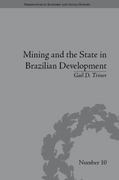Question
9. The city of Tawnee has a single gas station. There are currently no significant restrictions on what price this gas station can set for
9. The city of Tawnee has a single gas station. There are currently no significant restrictions on what price this gas station can set for gasoline, as there are no other gas stations within a 50 mile radius. Suppose that the Ms. Knope, the mayor of Tawnee, is thinking of imposing a new license fee on the gas station, which she plans to use to help repair/resurface roads or improve parks in the city. The proposed new license fee would be an annual lump sum (i.e., unrelated to quantity of gasoline sold) of $10,000 per year (which is not enough that it would put any gas station out of business entirely). The owner of the gas station, Councilman Hamm, is not happy about this proposal! In a public advertisement against the proposal he claims that, "this license fee will force us to raise prices. The entire cost of this license will get passed along to customers, hurting the wallets of everyday hardworking Tawneeans!" Suppose there are no other changes in costs or demand other than the imposition of the license fee. Is what Hamm is saying true? (a) Yes, because the gas station is a monopoly, it is true that in the entire cost of the license will get passed along to customers, regardless of the elasticity of demand, and therefore prices will rise. (b) What Hamm is saying would only be true if demand were perfectly elastic. (c) Prices will go up, but only some of the increased cost will get passed along to customers (since demand probably isn't perfectly inelastic). (d) No, prices will not change.
10. PrintMaster (PM) is considering how to set pricing for its commercial 3D printing machine, which would work exclusively with its patented polymer resin. (The polymer resin is what is used to produce 3D print-outs from the printer.) Suppose it knows that its typical customer has a monthly demand for polymer resin of P = 5 0.01Q. In this equation Q is the number of pounds demanded and P is the price per pound. The marginal cost for PM per pound of resin produced is constant at $1 per pound. There is no marginal cost for PM otherwise. (I.e., they don't have to perform maintenance, or incur any other costs from leasing out the printing machines.) PM is considering a two part tariff: A monthly lease price (L) for the printer, and a per unit price (P) in dollars per pound of resin. What two-part pricing scheme maximizes their profits? (a) P = $1/pound, F = $800 (b) P = $3/pound, F = $800 (c) P = $3/pound, F = $200 (d) P = $0/pound, F = $1250 (e) None of the above
Step by Step Solution
There are 3 Steps involved in it
Step: 1

Get Instant Access to Expert-Tailored Solutions
See step-by-step solutions with expert insights and AI powered tools for academic success
Step: 2

Step: 3

Ace Your Homework with AI
Get the answers you need in no time with our AI-driven, step-by-step assistance
Get Started


